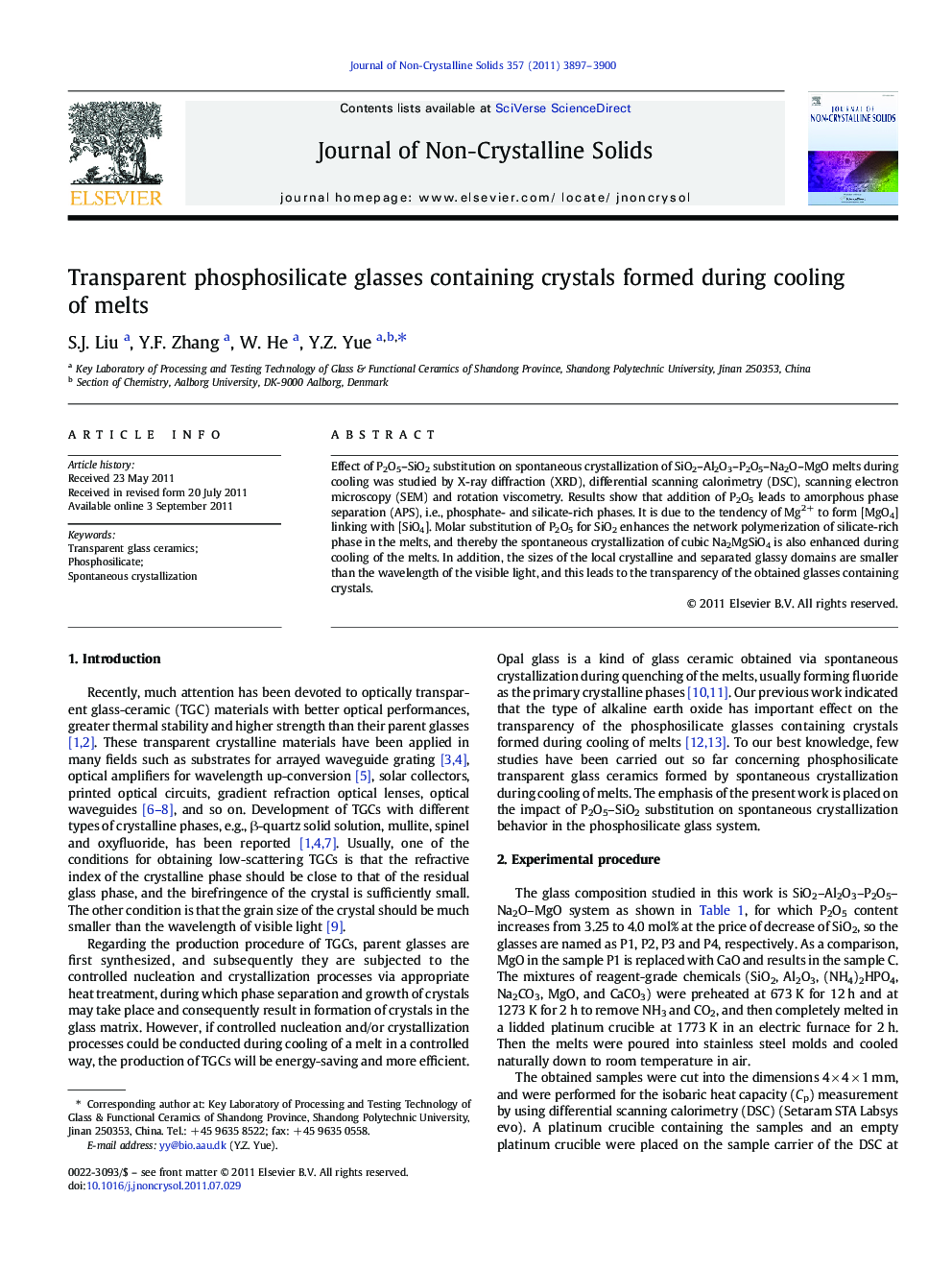| Article ID | Journal | Published Year | Pages | File Type |
|---|---|---|---|---|
| 1481830 | Journal of Non-Crystalline Solids | 2011 | 4 Pages |
Effect of P2O5–SiO2 substitution on spontaneous crystallization of SiO2–Al2O3–P2O5–Na2O–MgO melts during cooling was studied by X-ray diffraction (XRD), differential scanning calorimetry (DSC), scanning electron microscopy (SEM) and rotation viscometry. Results show that addition of P2O5 leads to amorphous phase separation (APS), i.e., phosphate- and silicate-rich phases. It is due to the tendency of Mg2+ to form [MgO4] linking with [SiO4]. Molar substitution of P2O5 for SiO2 enhances the network polymerization of silicate-rich phase in the melts, and thereby the spontaneous crystallization of cubic Na2MgSiO4 is also enhanced during cooling of the melts. In addition, the sizes of the local crystalline and separated glassy domains are smaller than the wavelength of the visible light, and this leads to the transparency of the obtained glasses containing crystals.
► The effect of P2O5–SiO2 substitution on crystallization of the phospho- alumino-silicate melts during cooling was studied. ► [MgO4] is linked with [SiO4] in the phosphosilicate glasses. ► Substitution of P2O5 for SiO2 enhances formation of the Na2MgSiO4 crystals in the melts during cooling. ► The obtained glass ceramics are transparent due to the nanosize of crystals in the glass matrix.
